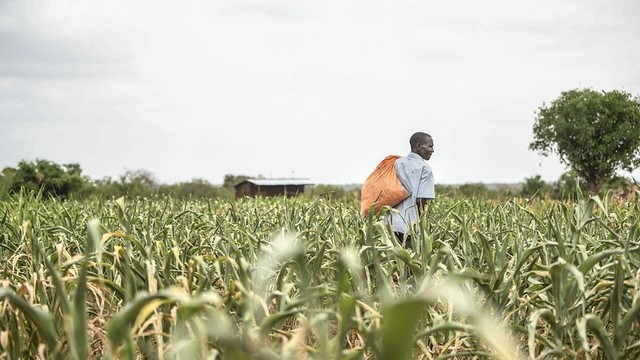Equity, inclusion, conservation and the SDGs
What's fair when it comes to conservation? Phil Franks explains how a new research tool is providing some insights.


A women's group in Kenya scores social impacts of protected areas using a participatory rural appraisal method (Photo: Phil Franks/IIED)
With the new Sustainable Development Goals (SDGs) the sustainable development agenda focuses on equity, equality, and inclusion as never before. Different agencies use these terms in somewhat different ways, but what do they mean in relation to conservation efforts?
In the SDGs these terms are mostly used in relation to access to resources, services and inclusion. In conservation policy 'equity' language is generally more common than references to inclusion and is often used in relation to the distribution of the benefits and costs of conservation as well as access to natural resources and participation.
On the other hand, organisations with a rights-based approach tend to frame their work in terms of justice rather than equity and/or inclusion.
What's fair when it comes to conservation?
In plain English equity, equality, inclusion and justice are just different ways of looking at fairness. But what does this actually mean in the context of biodiversity conservation?
Building on its Darwin-funded Social Assessment of Protected Areas (SAPA) project, IIED together with academia and a range of organisations working on conservation policy and practice, has been leading a process to try to answer this question in the context of protected areas (PAs).
At the heart of this work is a three-dimensional understanding of equity built on recognition of rights, procedures, and distribution of costs and benefits.
This work responds to the Aichi targets, established under the Convention on Biological Diversity, which include the "equitable management" of protected areas (Aichi Target 11) and, more broadly to SDGs 14 and 15, where equity is key to conservation effectiveness and sustainability.
The approach we are using could also be readily applied to other conservation and development contexts, ie many of the other SDGs.
Assessing fairness
In practical terms how can the management and governance of protected areas become fairer/more equitable and how would you know if you were making progress in this direction? This is where SAPA comes in.
SAPA is a relatively simple, low-cost methodology for assessing the positive and negative impacts (benefits and costs) of a protected area and of any related conservation and development activities on the wellbeing of communities living within and around the area.
It involves local communities, protected area staff, and other key stakeholders (e.g. local government) in a jointly designed assessment process and aims to enable PA managers to make changes to share the benefits of conservation (such as revenue from tourists) more equitably, and to reduce any costs (e.g lack of access to resources, or problems with wildlife).
SAPA does not address all aspects of equity/fairness in conservation – it focuses on the distribution of costs and benefits and some aspects of procedure – but it goes a long way in the right direction.
SAPA can be used with any kind of protected area, including those managed and governed by government agencies, communities and the private sector.

To date SAPA has been used at seven protected areas in five countries in Sub-Saharan Africa: Ethiopia, Gabon, Kenya, Uganda and Zambia, using a mixed methods approach, combining participatory rural appraisal methods, a survey and stakeholder workshops.
Based on learning from these sites, a manual providing detailed guidance for use of the SAPA methodology has just been published.
A summary of results from the sites in Gabon, Kenya, Uganda and Zambia will be published by early April 2016.
Phil Franks (phil.franks@iied.org) is a senior researcher in IIED's Natural Resources Group.




